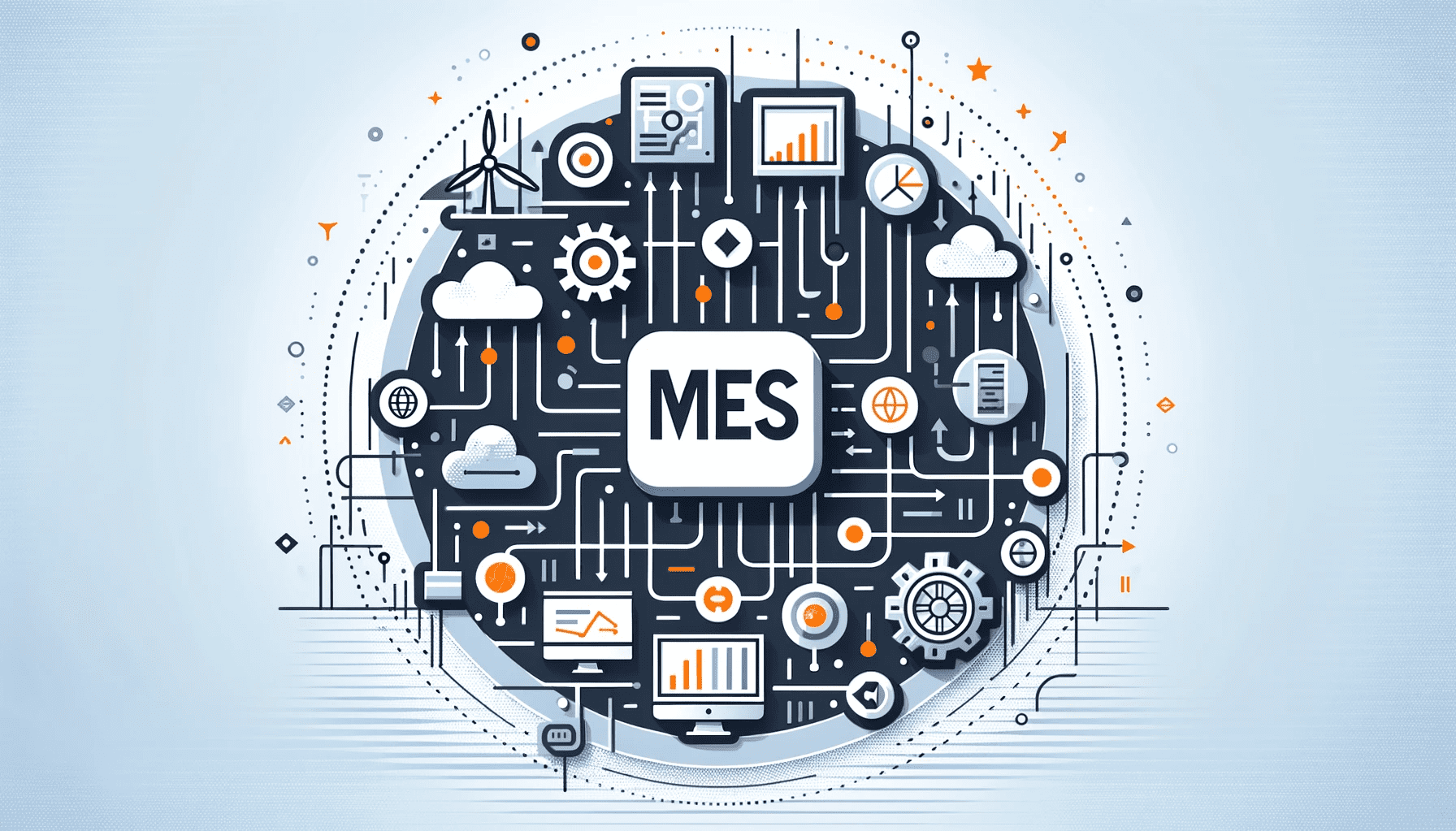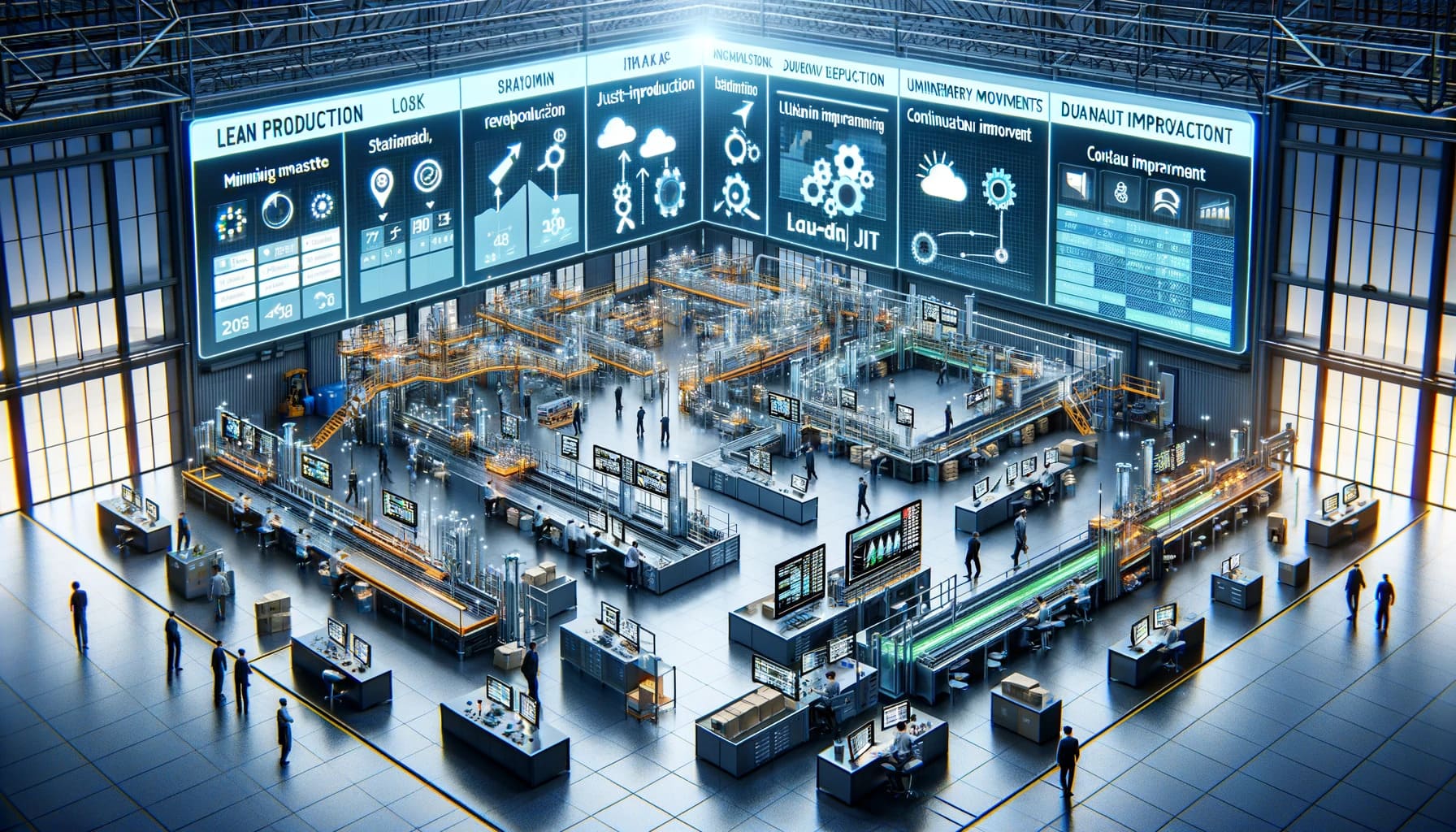Cloud-native MES vs Microsoft Power BI for the digitalization of production

Find out more about the different focus of cloud-native MES systems vs Microsoft Power BI and the benefits of both systems for your company.
- What is cloud-native MES?
- What is Power BI?
- What distinguishes both systems?
- What are the main differences?
- What are the special features of a cloud-native MES?
- Cloud-native MES and Power BI working together
When comparing "Cloud-native MES vs Microsoft Power BI", the question is not whether one or the other system should be used in a production environment - the focus of the two systems is too different.
What is cloud-native MES?
Cloud-native MES refers to a Manufacturing Execution System (MES) that has been specially developed for the modern cloud environment. Unlike traditional MES systems that are deployed on local servers or data centers, a cloud-native MES runs in the cloud and takes advantage of the enormous benefits of cloud technology. This enables fast, cost-effective availability, flexible scalability, easier maintenance and improved availability.
An MES is used to improve efficiency and agility in production. It enables access to real-time data, the integration of machines and systems and the automation of processes. This enables companies to increase their efficiency, reduce costs and increase their competitiveness.
What is Power BI?
Power BI from Microsoft is a versatile and generic business intelligence and data visualization tool that makes it possible to aggregate, model and interactively display data from various sources. It supports users in making data-based decisions through easy-to-understand reports and dashboards.
The core functions of Power BI include the integration of various data sources, the creation of data models and interactive visualizations as well as ensuring data security and access control. Power BI also promotes collaboration and data sharing through its seamless integration with other Microsoft products. Available in Power BI Desktop, Power BI Pro and Power BI Premium versions, Power BI addresses the needs of individuals through to large organizations.
Power BI can use data from Microsoft Azure services and is part of the larger Microsoft ecosystem that includes Office 365 and Azure.
Further general information on Power BI and specific Power BI content can be found on the official pages of Microsoft Power BI.
What distinguishes both systems?
Cloud-native MES (Manufacturing Execution Systems) solutions and Power BI, although operating in different primary use cases, share some fundamental similarities, especially when it comes to their implementation and use in the cloud. Here are some of the key similarities:
-
Cloud-based architecture
Both cloud-native MES and Power BI take advantage of the cloud computing infrastructure, which offers scalability, flexibility and accessibility from anywhere. They are designed for the cloud to ensure optimal performance, security and reliability.
-
Scalability
Cloud-native MES and Power BI offer the ability to scale usage based on the current needs of the business. This means that companies can increase or decrease their resource utilization as needed, providing a cost-effective solution.
-
Integration with other cloud services
Cloud-native MES and Power BI can be easily integrated with other cloud services and applications, simplifying data aggregation, analysis and reporting across different systems and platforms.
-
Data analysis and visualization
Although MES systems are primarily designed to monitor and control manufacturing processes, they also offer data analysis and visualization capabilities, similar to Power BI. Both systems can transform data into useful insights that contribute to decision-making.
-
Improving the decision-making process
Both cloud-native MES and Power BI enable companies to make data-driven decisions. By providing access to real-time data and historical data analysis, they support the optimization of operations, production processes and business strategies.
-
Security and compliance
As both solutions are operated in the cloud, they follow strict security protocols and compliance guidelines to ensure data integrity and security. Cloud providers usually offer advanced security measures that support the protection of company data.
-
Accessibility and mobility
With cloud-native MES and Power BI, users can access important information from anywhere, as long as there is an internet connection. This accessibility supports flexible working models and enables decision-makers to stay informed on the move.
-
Continuous updates and maintenance
Both solutions benefit from the software-as-a-service and cloud infrastructure in terms of continuous updates and maintenance. This means that users always have access to the latest functions and security updates without the need for manual intervention.
Despite their different areas of application - MES in the field of production control and Power BI in business intelligence - cloud-native MES systems and Microsoft Power BI share these core features that make them valuable tools for modern, data-driven companies.
What are the main differences?

Cloud-native MES (Manufacturing Execution Systems) and Microsoft Power BI serve different main purposes and therefore have a number of differences, both in terms of their functionality and their areas of application. Here are some of the key differences:
- Primary area of application
-
-
Cloud-native MES is a specific software tool that focuses on the control, management and optimization of production processes in manufacturing companies.
-
Power BI is a generic business intelligence software tool designed for data analysis and visualization across different business areas. It aims to provide data-driven insights to support decision making and is not specific to the manufacturing industry.
-
- Functionalities
-
-
Cloud-native MES provides detailed real-time insight, control and analysis capabilities specifically for manufacturing, including machine monitoring, material tracking and process management. Such a system also focuses on tasks such as production monitoring, key figures, production control, production planning, quality management, adherence to delivery reliability and the recording of production data in real time.
- Power BI focuses generically on aggregating, analyzing and presenting data from various sources to show trends, patterns and performance indicators that are relevant for decision-making.
-
- Target group
-
- Cloud-native MES are aimed at the operational level (production manager, shopfloor personnel, maintenance manager, lean manager, QS manager, etc.) as well as the commercial level (COO, CFO, controlling, etc.).
-
Power BI is intended for a specific user audience within an organization, i.e. analysts, business managers and decision makers in various departments such as marketing, sales, finance and operations.
- Cloud-native MES are aimed at the operational level (production manager, shopfloor personnel, maintenance manager, lean manager, QS manager, etc.) as well as the commercial level (COO, CFO, controlling, etc.).
-
Data processing and analysis
-
Cloud-native MES focus on processing and analyzing data in real time to optimize the efficiency and productivity of manufacturing processes.
-
Power BI is designed to process historical data and create reports and dashboards that cover a wide range of business data - not just from production.
-
-
Integration and data sources
-
Cloud-native MES usually integrates directly with production equipment and sensors as well as with other systems such as ERP (Enterprise Resource Planning) for a seamless data flow within the manufacturing environment.
-
Power BI can integrate data from a variety of sources, including cloud services, databases, Excel files and external APIs, to provide a comprehensive picture of business performance.
- Cloud-native MES can be a data source for a Power BI application.
- Microsoft Power BI is not able to directly integrate production systems and sensors.
-
-
User experience
-
Cloud-native MES are highly specialized systems that are tailored to the specific needs and processes of a manufacturing company.
-
Power BI offers customization options for generic dashboards and reports to meet different requirements in an organization.
-
These differences reflect the respective strengths and areas of application of cloud-native MES and Power BI. While MES systems are essential for the direct control and optimization of production processes, Power BI offers powerful tools for comprehensive data analysis and reporting that support decision-makers.
What are the special features of a cloud-native MES?
A cloud-native MES offers various advantages over conventional MES solutions. The most important advantages include:
-
Fast availability
A cloud-native MES can be booked at any time as Software-as-a-Service, i.e. it is available and ready for use in the shortest possible time.
-
Scalability
With a cloud-native MES, you can "start small" to gain initial experience without risk. It can then be scaled quickly and easily as required. Companies can add or remove resources to meet current requirements.
-
Cost-effective
Cloud-native MES is booked as a cost-effective SaaS subscription. The investment costs (CAPEX) and implementation periods that used to be standard with this MES architecture do not apply.
-
Flexibility
As a cloud-native MES runs in the cloud, users can access the systems and data from anywhere and at any time. This enables flexible work organization and supports collaboration in distributed teams.
-
Ease of maintenance
A cloud-native MES is maintained and updated centrally in the cloud. This enables easier management and maintenance, as no updates need to be installed on local servers or data centers.
-
Integration
A cloud-native MES enables seamless integration with other cloud-based systems, such as an SAP system, Power BI, and other applications, such as an on-premises MES. This allows companies to efficiently manage and optimize their entire manufacturing landscape.
Cloud-native MES and Power BI working together
.jpg?width=1792&height=1024&name=MES-in-production%20(1).jpg)
Integration into an existing IT system landscape can be an important aspect when introducing a cloud-native MES. If Power BI or another business intelligence system for the visualization and analysis of data from production is already in use in a company, it may make sense to leave the existing application in place for the time being so as not to overburden these users.
Power BI data quality can be improved quite easily by using a cloud-native MES as the data source. In addition to high quality through automated and standardized (trustworthy) data, another important aspect is the real-time provision of data.
How does the data from a cloud-native MES get into Microsoft Power BI?
A central component of a cloud-native MES is its manufacturing connectivity platform, which includes a database in the cloud. Modern REST-API standard interfaces should be used for secure external data exchange - this is state-of-the-art. Alternatively, conventional file interfaces can be used.
Contact us to find out more in detail and let an expert show you how easy it is to exchange data between cloud-native MES and Power BI in practice.
Further interesting information about MES and the MES architectures available on the market can be found in our MES blog posts:





